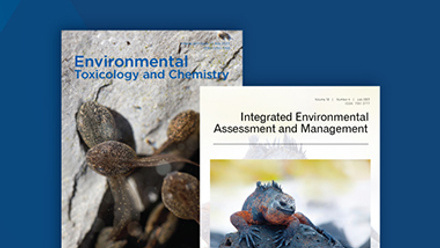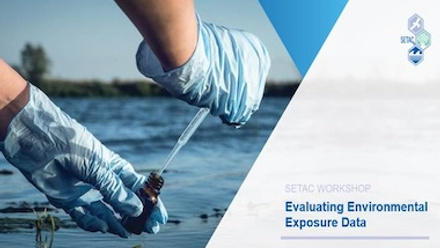Linking Molecular, Cellular, Tissue and Organ Level Effects to Apical Endpoints in Wildlife Toxicology
Beatrice Hernout, Exponent; Barnett Rattner, US Geological Survey; and Tom Bean, BASF
Regulatory frameworks for wildlife risk assessment are primarily derived from organismal apical-level endpoints such as survival, growth and reproduction. Over the last 60 years, scientific advances have enabled evaluation of effect endpoints at the biochemical, cellular and genetic level for wildlife. This session, including six platform and six poster presentations, provided examples where effects on lower levels of biological organization in wildlife species have been linked to apical effects.
The session addressed three themes: 1) promising new approach methods (NAMs) (e.g., in vitro, in ovo and in silico), 2) field studies to evaluate health of individuals and populations, and 3) wildlife specific modeling approaches.
Audrey Bone (Bayer AG – Crop Science Division) kicked off the NAMs-themed presentations with a brief description of NAMs developed for birds: Embryo injection techniques, EcoToxChip, and immortalized cell lines. Bone pointed out the challenges related to the use of NOECs and LOECs, the lack of understanding around the actual points of departure, modes of action, and detailed, curated and publicly available databases of avian toxicity data. She ended her talk by presenting a wish list, including a curated database of avian toxicity data, avian specific adverse outcome pathways (AOPs) for sub-lethal effects on growth and reproduction, and data generation using currently available NAMs.
The session also included one platform presentation and three posters focused on the EcoToxChip System. Jessica Head (McGill University) presented results of a ring test using Chlorpyrifos in early life stage exposure (egg injection) in the Japanese quail. Only a small percentage of differentially expressed genes (DEGs) were shared amongst the three labs (Environment and Climate change Canada, McGill University, US Geological Survey), and Head showed the top five DEGs. For the other genes that were not differentially expressed, a large percentage were shared across the three laboratories. In addition, Head explained the method for transcriptomic dose–response and derived the transcriptomic point of departure (tPOD). The tPOD short-term studies are correlated with organismal level PODs derived from chronic studies. Head explained that they found similar tPOD max 1st peaks across all three laboratories. Additionally, the tPOD values were comparable with apical outcomes for the double-crested cormorant and mortality for Japanese quail.
Two poster presentations by Emily Boulanger (McGill University) outlined additional studies that have been conducted to further validate the use of the EcoToxChip system in Japanese quail by applying these methods to study chemicals with well-resolved mechanisms of action such as Ethinyl Estradiol (EE2) and Hexabromocyclododecane (HBCD). Other applications of the EcoToxChip were presented during the session by Ramela Arax Koumrouyan (McGill University): UV absorbents exposure in early life stages of Japanese quail and double-crested cormorant embryos. Mason King (Simon Fraser University) illustrated applications of the EcoToxChip technique for the double-crested cormorant indicating variation in gene expression related to a site or contaminant concentrations when supported with chemical data (such as PCBs, PBDEs and PFAS) (Poster presentation).
Peter Van den Hurk (Clemson University) presented an application of molecular work to predict potential toxicity and sensitivity of acetaminophen across avian species. On the island of Guam, the introduced brown tree snake population has been managed and controlled using acetaminophen baits. Several wild bird populations in Guam have been severely reduced or even extirpated, and some conservation actions are attempting to re-introduce wild bird species on the island. There remains a need to understand the sensitivity of these Pacific Island wild birds to acetaminophen. The main pathway to metabolize acetaminophen involves UDP glucuronosyltransferase (UGT) producing the water-soluble O-glucuronide. In mammals, the isoform UGT1AG is involved in this metabolism. For avian species, 16 isoforms have been identified. Van den Hurk’s research aimed to understand which isoform(s) metabolize acetaminophen in birds based on an experimental study using chickens, and whether this(these) isoform(s) is/are found in a variety of bird species. Van den Hurk showed that two isoforms seem to be responsible for acetaminophen metabolism and were identified in chicken, but there is a discrepancy with another study that found two different isoforms. Ultimately, the design of qPCR primers recognizing UGT isoforms responsible for acetaminophen metabolism in a broad range of avian species could be used to better evaluate the potential toxicity of acetaminophen to Pacific Island bird species. While this research is still on-going, it shows the potential of molecular work for understanding sensitivity across species and its potential use in wildlife conservation and management.
Regarding the in silico theme of the session, Nika Galic (Syngenta) showed an in vitro to in vivo extrapolation (IVIVE) and physiologically based kinetic (PBK) models for three avian species exposed to thiamethoxam. By using in vitro kinetic measurements of chicken, mallard and bobwhite, including metabolic stability and plasma protein binding, the IVIVE-PBK models were parameterized. Galic concluded that the integrated DEB-PBK-TD approach can greatly increase the utility of in vivo studies conducted for avian risk assessment and allows for a more realistic assessment of potential risks to individuals and populations in the field (Virtual poster presentation).
Moving towards the field studies that enable linkages with effects in free-ranging species theme of the session, Keith Grasman (Calvin University) presented an extensive and long-term study in colonial waterbirds of the Great Lakes that combined immunotoxic effects of contaminants to apical endpoints. Grasman showed that immunological and reproductive subapical endpoints can be incorporated into a field assessment to help provide mechanistic information for interpreting organismal- and population-level effects. For planar PCBs and dioxins, a large body of work supports mechanistic connections across levels of organization from exposure to apical endpoints. Some of the lines of evidence included population declines observed in some colonial waterbird breeding in PCB/dioxin contaminated ecosystems; reproductive success was often low in these areas of concern. Contaminant-induced immunosuppression as a potential pathway leading to low reproductive success and population declines through effects on survival of pre-fledglings, post-fledglings and adults. Immunosuppression at contaminated Great Lakes sites is consistent with past studies showing associations with planar PCBs and dioxins levels in individuals.
The session concluded with talks by Mark Johnson (US Army Public Health Center) and Barnett Rattner (US Geological Survey). Johnson discussed considerations for selecting assays relevant to wildlife for ecological risk assessement (ERA), highlighting that the assessment population defined in ERA can be considered equivalent to the metapopulation in contemporary ecology. He emphasized the importance of gathering and understanding life history data (e.g., behavioral effects should be integrated with exposure assessments to improve accuracy). Other data gaps for exposure assessment included food ingestion rates, foraging ranges and exposure via dermal and inhalation routes. For effects assessment, understanding mechanistic effects would help improve read-across through better comprehension of interspecific differences, while indirect effects and effects of mixtures were also identified as important gaps in our current frameworks. Johnson highlighted that toxicity benchmarks can be affected by population density, movements and community dynamics, and an understanding of whether survival, reproduction growth or even behavior endpoints regulating a population should be considered.
Barnett Rattner closed the session with a critique of lower-level toxicological response measurements with linkage to apical effects for wildlife ERA. Rattner illustrated cases in which sub-organismal endpoints have been used in wildlife damage risk assessment, mostly retrospective assessments. For prospective assessments, lower-level responses may be used if they can be linked to an assessment endpoint. He highlighted the challenges and complexity of linking sub-organismal responses of contaminants to higher order effects such as multiple modes of action and feedback loops, cross-species extrapolation and chemical mixtures. While these challenges remain, some examples of ongoing efforts and solutions were shown such as toxicokinetic-toxicodynamic (TK-TD models), Dynamic energy budget-TKTD, AOP for Aryl hydrocarbon receptor, and several other tools that may assist with linkages to apical effects. Rattner concluded that while there is no single tool that will address all uncertainties in hazard assessment, these uncertainties can be reduced using in vitro assays and in silico tools. NAMs can serve as a screening tool and add clarity to ERA even if in vivo data remain a significant component of ERA.
These presentations from scientists in academia, government and business provided a global overview of novel approaches potentially used in future ERA and their challenges. Overall, reduced costs of molecular technology, advances in assessing effects at lower levels of biological organization and the ability to model outcomes at the individual (and population) level in wildlife are encouraging. Whole organism data from laboratory and field ecotoxicology and monitoring studies in wildlife still integrate the greatest level of complexity and, for the foreseeable future, are going to be the gold standard for assessment and validation of these new approaches.
Authors' contact: [email protected], [email protected] and [email protected]






